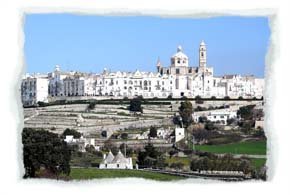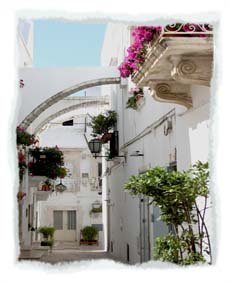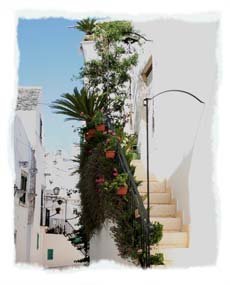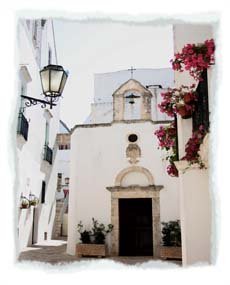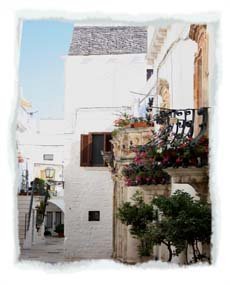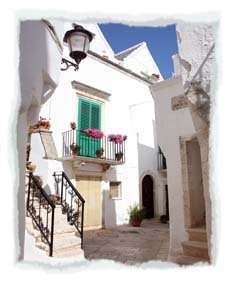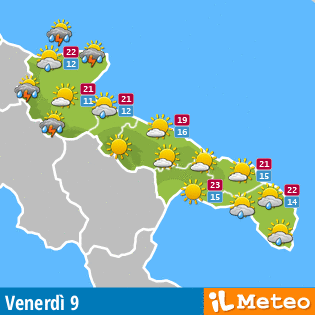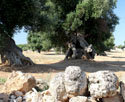Locorotondo
Info Locorotondo
-
Region:
Provincie:
Municipality:
CAP:
Area code:
Surface:
Population:
city hall:
-
Apulia
Bari
Locorotondo
70010
080
47,50 Kmq
14.258
Piazza Aldo Moro 29
Locorotondo, a village immersed in the beautiful Valle d’Itria
It is a village standing on the top of an hill in the beautiful Valle d’Itria. It is possible to admire the view from the municipal villa but it is also interesting to venture in the narrow alleys of the suburb and admire the ancient buildings made of white lime. The name of the town comes from the concentric position of its streets. Houses with particular sloping roofs covered by the so called chiancarelle characterize the village.
The promontory is 410 metres high and dominates the valle dei trulli; it offers the possibility of admiring the near towns of Martina Franca, Cisternino and Alberobello. The local scholars think that the town was founded nearly in the 11th century, by Benedictine monks of the abbey of Santo Stefano in Monopoli, who have been feudatories of the town until 1385. In 14th century the city became estate of the Orsini del Balzo, princes of Taranto, to whom succeeded the Caracciolo from the near Martina Franca, until 1860.
The symbol of the city is the Mother Church of San Giorgio, which dominates the town with its dome; in the past it was covered by enameled baked clay. It has been built between the 18th and 19th centuries according to the neoclassic style but, inside, it appears as a spacious and bright late Baroque building.
It shows precious paintings and marble altars of late Baroque style; it is worth mentioning also the Renaissance carved stone panels, which date back to the 14th century: they surround the arch of the Holy Sacrament chapel and represent episodes of the Old Testament.
Very interesting is also the 14th - century church of Santa Maria la Greca; it has three naves with a ceiling characterized by crossed cummerse; it is also worth mentioning the 17th – century church of San Nicola, which shows the architectonic structure of the sloping roof and that of the trullo.

